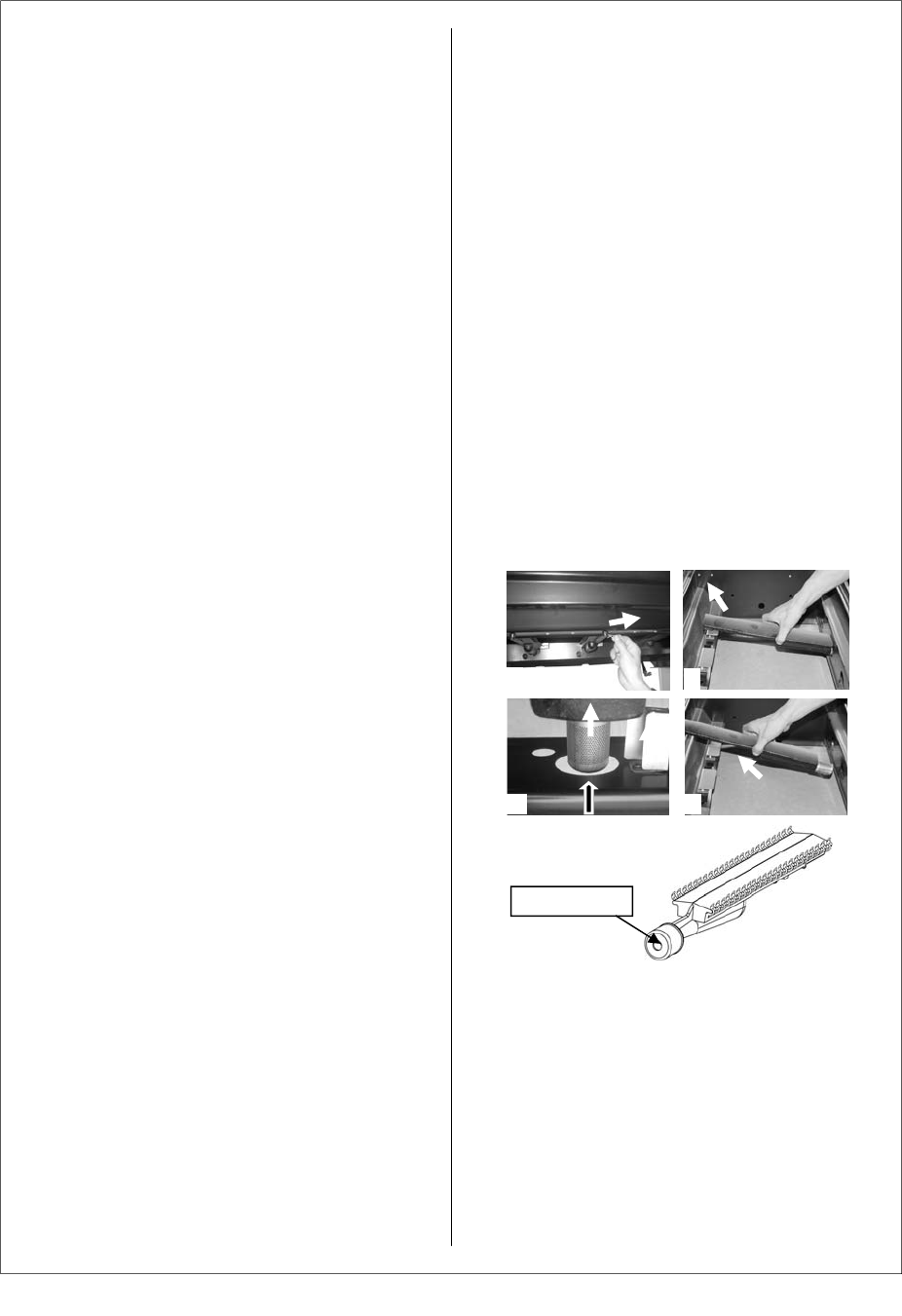Special offers from our partners!

Find Replacement BBQ Parts for 20,308 Models. Repair your BBQ today.

14
1
2
or stored in damp, moist areas.
n
Never douse the barbecue with water when its
surfaces are hot.
n
Never handle hot parts with unprotected
hands.
In order to extend the life and maintain the
condition of your barbecue, we strongly
recommend that the unit be covered when left
outside for any length of time, especially during the
winter months. Heavy-duty Outback® barbecue
covers and other accessories are available from
your local Outback® stockist.
Even when your barbecue is covered for its
protection, it must be inspected on a regular basis
as damp or condensation can form which may
result in damage to the barbecue. It may be
necessary to dry the barbecue and the inside of
the cover. Any rust that is found that does not
come into contact with the food should be treated
with a rust inhibitor and painted with barbecue
paint or a heat resistant paint. Wooden parts may
also need to be cleaned and re oiled. Chrome
plated warming racks etc. should be coated with
cooking oil.
I1. Porcelain Coated Cast Iron Cooking
Surfaces
Clean with hot, soapy water. To remove any food
residue, use a mild cream cleaner on a non-
abrasive pad. Rinse well and dry thoroughly. We
do not recommend cleaning grills and griddles in a
dishwasher.
I2. Burner Maintenance
Provided that they are operating correctly, in
normal usage, burning off the residue after
cooking will keep the burners clean. The burners
should be removed and cleaned annually, or
whenever heavy build-up is found, to ensure that
there are no signs of blockage (debris, insects) in
either the burner portholes or the primary air inlet
of the cast iron burners. Use a pipe cleaner to
clear obstructions. A wire brush can be used to
remove corrosion from the burner surfaces. It is
quite normal for surface rust to be present on the
burners. When refitting the burners, be careful to
check that the neck of the burner fits over the
valve outlet.
Your burners have been preset for optimal flame
performance. You will normally see a blue flame,
possibly with a small yellow tip when the burner is
alight. If the flame pattern is significantly yellow,
this could be a problem caused by grease from
cooking blocking the burner or spiders or other
insects in the burner venturi. This can result in the
flow of the gas and air mixture being restricted or
blocked which may result in a fire behind the
control panel causing serious damage to your
barbecue. If this happens, the gas should be
immediately turned off at the bottle. Burners
should be inspected and cleaned on a regular
basis in addition to the following conditions:
• Bringing the barbecue out of storage.
• One or more of the burners do not ignite.
• The burner flame pattern is significantly
yellow.
• The gas ignites behind the control panel.
To clean a burner, remove it from the barbecue. It
is quite normal for a cast iron burner to rust. The
outside of the burner can be cleaned with a wire
brush.
Clean the portholes with a pipe cleaner or piece of
wire. Take care not to enlarge the portholes.
Clean the insect screen on the end of the venturi
tube with a bristle brush (i.e. an old toothbrush).
Clean the venturi tube with a pipe cleaner or piece
of wire. You may need a torch to see into the
venturi tube to make sure it is clear. You will see a
pin inside the tube which is part of the burner
assembly.
Turn the burner up on end and lightly tap against a
piece of wood to dislodge any debris from inside.
I3. Lava Rock
It is not necessary to remove and wash the lava
rock in order to keep it clean. Burning off the
residue after each cooking should be sufficient.
Heavily impregnated lava rock should be turned
over so that the dirty side faces the burners in
order to burn off any residue. Replacement lava
rock is available from your local Outback®
stockist.
I4. Drip Tray
After every use, check the drip tray for fat build-up
in the sand. Discard any saturated sand and
Venturi tube
3 4


















